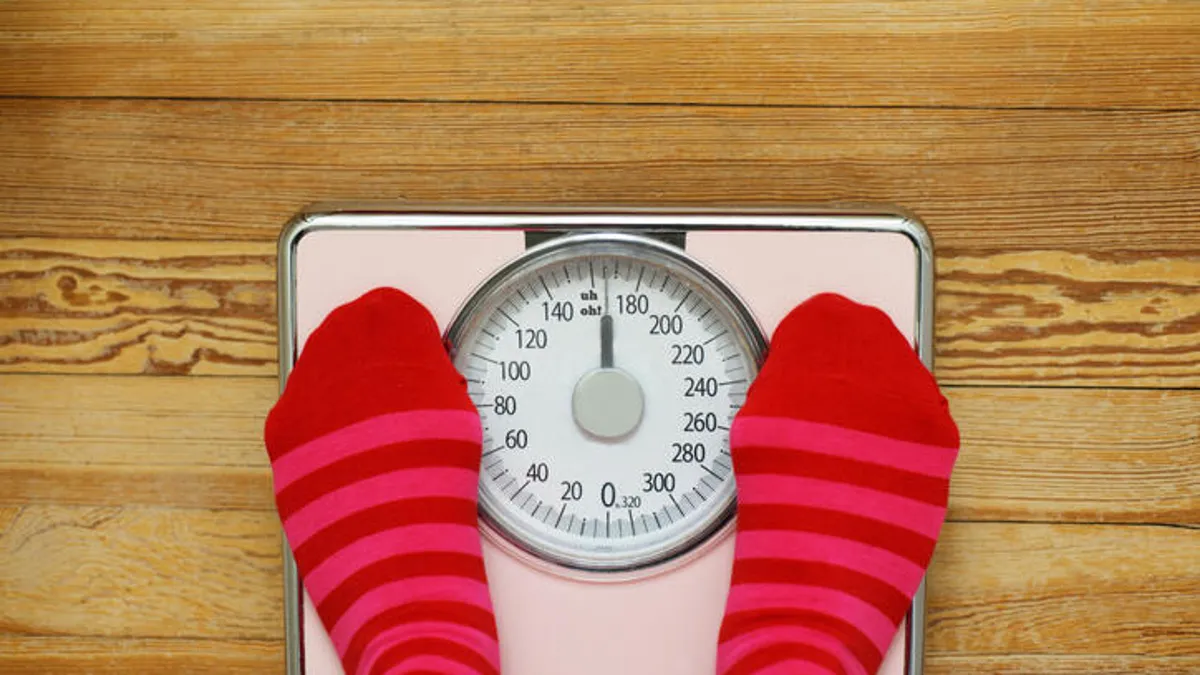
What is Total Daily Energy Expenditure (TDEE)?
Your Total Daily Energy Expenditure (TDEE) is essentially the total calories your body utilizes within 24 hours. This is the energy required for vital functions such as breathing, digestion, and brain activity.
TDEE also includes the calories required to perform physical activities. As one of the most comprehensive metrics, TDEE can help you better understand your daily energy usage. So, make sure you know the fundamentals of TDEE to make the most of your TDEE calculator.
What's the Best Formula for the IIFYM TDEE Calculator?
The most accurate formula on the IIFYM calculator is The Lean Mass option. This option allows you to customize your nutritional needs and macros based on your body’s muscle mass, rather than simply your total weight.
Consider this: muscle is alive. So, it requires a steady flow of nutrients for growth and survival. On the other hand, fat requires minimal attention to maintain its mass. The Lean Mass option in the macro Calculator aligns with this principle, making it the ideal choice for calculating your macros.
How to Calculate TDEE?

The easiest and the most accurate way to calculate your TDEE is by using the IIFYM TDEE calculator.
You can easily calculate your Total Daily Energy Expenditure (TDEE) by just entering your gender, weight, age, height, and how active you are (activity level) into our IIFYM Macro calculator.
This calculator for calories will use a formula based on lean muscle mass to estimate the calories you burn in a day, considering your workouts too.
Manually calculating TDEE involves a two-step process.
In step 1, you need to calculate your BMR.
In Step 2, multiply your BMR by your activity factor to ascertain your TDEE.
TDEE = BMR x Activity Factor
Or
TDEE=BMR+TEF+EEE+NEAT
1. Calculating Basal Metabolic Rate (BMR)
To find your BMR, simply multiply your body weight in kilograms by 22. Coaches typically collect this information during their assessment.
Example:
If the weight is 150 pounds, equivalent to approximately 68 kg,
BMR = 68 kg x 22 = 1496 calories.
Hence, the estimated BMR for a 150-pound individual would be 1496 calories.
2. Calculating Thermic Effect of Feeding (TEF)
Thermic Effect of Feeding (TEF) Calculation
To compute TEF, multiply the BMR by 0.15.
Example:
If the BMR is 1800,
TEF = 1800 x 0.15 = 270 calories
3. Calculating Exercise Energy Expenditure (EEE)
There isn’t a specific formula for EEE as it can vary for different individuals. But, a common estimate ranges from 200 calories for light to moderate exercise to 450-500 for vigorous exercise.
Example:
For a beginner performing an hour-long workout, EEE = 200.
However, an experienced individual with an extended exercise session might have an EEE of 450 calories or even more.
4. Calculating Non-Exercise Activity Thermogenesis (NEAT)
You cannot precisely calculate NEAT, and it can vary from 200 to 500 calories, based on your daily activity levels. This metric plays a vital role in determining calories to lose weight calculator.
Example:
For an individual leading a sedentary lifestyle, NEAT might be around 200.
A more active role, like that of a construction worker or a delivery driver, could elevate NEAT to around 500 calories.
Here’s an example of TDEE Calculation:
Sample TDEE Calculation:
Given the client’s weight of 80 kg,
TEF = 180
BMR = 1700
EEE = 300
NEAT = 280
TDEE=BMR+TEF+EEE+NEAT
TDEE = 1700 + 180 + 300 + 280 = 2460 calories per day.
What is the TDEE Calculator?
If you’re in search of a reliable method or tool to calculate your daily calorie expenditure, consider using a Total Daily Energy Expenditure calculator like the IIFYM TDEE calculator.
Using scientifically proven calculations, this tool offers a nearly accurate estimate of the energy your body uses over 24 hours.
TDEE calculator IIFYM factors in your resting energy use, the thermic effect of food metabolism, and your regular physical activity, to name a few.
So, if you’re searching for “calculate my calories to lose weight” in Google, this tool provides an estimate of your daily calorie utilization, considering factors like age, activity level, height, and body weight.
How to use IIFYM TDEE Calculator? A Step-by-Step Guide
- FREE MACRO CALCULATOR
- Advanced MACRO CALCULATOR & blueprint
How would you like to receive your Macros?
Lorem ipsum dolor sit amet, consectetuer adipiscing elit. Aenean commodo ligula eget dolor. Aenean massa. Cum sociis natoque penatibus et magnis dis parturient montes, nascetur ridiculus mus. Donec quam felis, ultricies nec, pellentesque eu, pretium quis, sem. Nulla consequat massa quis enim.
Find your daily calorie needs quickly and easily with our state-of-the art IIFYM TDEE calculator in just 30 seconds. Here’s a step-by-step guide on how to use our TDEE calculator to achieve your fitness goals:
1.Select Your Gender
Choose your gender as it impacts the calculation of your Total Daily Energy Expenditure (TDEE).
2. Enter Your Age
Input your current age.
3. Choose Measurement System
Select between Imperial or Metric units.
4. Input Your Height
Provide your current height.
5. Provide Current Weight
Enter your current weight.
6. Set Goal Weight
Specify your target weight.
7. Estimate Body Fat Percentage
Give an approximate body fat percentage.
8. Assess Job/Daily Activity
Choose your daily activity level:
– Sedentary
– Lightly Active
– Moderately Active
– Very Active
9. Rate Your Fitness Level
Indicate whether you are a Beginner, Intermediate, or Advanced in fitness.
10. Specify Workout Location
Select either Gym or Home.
11. Weightlifting Frequency
Enter the number of days per week, minutes per day, and intensity level (Light, Moderate, Difficult, Intense).
12. Cardio and Group Fitness
Provide the number of days per week, minutes per day, and intensity level (Light, Moderate, Difficult, Intense).
13. Nutritional Preferences
Choose your dietary preference from options like Standard Western, Vegan, Vegetarian, Pescatarian, Pollotarian, Pesce-Pollotarian, or Low Carbs.
14. Medical Diagnosis
Select any relevant medical diagnosis from the given options:
– Prediabetic
– Hashimoto’s
– Diabetic Type 1 or 2
– Menopause
– PCOS
– None
15. Tracking Macros Experience
Choose your experience level with tracking macros:
– Totally Noob
– Self Aware
– Moderate
– Total Pro
What are the Components of TDEE?

Your TDEE depends on four crucial factors, namely:
1. Basal Metabolic Rate (BMR):
The baseline calories your body uses at rest.
2. Exercise Activity Thermogenesis (EAT):
It measures the energy requirements of specific physical activities (planned and structured exercise).
3. Non-exercise activity thermogenesis (NEAT):
These are calories you burn through daily non-exercise movements.
4. Thermic Effect of Food (TEF):
This is the energy used to digest, absorb, and process nutrients.
Let’s take a look at each one of them.
5. Basal Metabolic Rate (BMR):
The Basal Metabolic Rate or BMR is an important factor to consider when creating a diet plan for weight loss. It represents the calories used during your body’s fundamental life-sustaining functions.
It is often referred to as Resting Metabolic Rate (RMR). In simpler terms, BMR indicates the calories you would burn if you were to remain in bed throughout the day. Make sure to calculate BMR and TDEE to lose weight or gain muscle mass effortlessly.
6. Thermic Effect of Food (TEF):
TEF refers to the energy required for digesting, absorbing, and processing each macronutrient. You can calculate TEF by multiplying the BMR by 0.15.
For example, if your BMR is 1800, the thermic effect of feeding would be 270 calories. This will help you calculate your caloric needs.
7. Non-Exercise Activity Thermogenesis (NEAT):
NEAT refers to the energy used to maintain and alter posture. It includes lying, walking, standing, stair climbing, muscle contractions, fidgeting, singing, cleaning, and other daily activities. The shift in NEAT is calculated as follows:
NEAT = TDEE − (BMR + TEF)
8. Thermic Effect of Activity (Exercise):
The Thermic Effect of Activity (TEA) signifies the energy demand for planned exercise. TEA or TEE can be different for different individuals.
This can be due to structured, voluntary physical activities and different exercise levels. TEF typically represents around 15 percent of the caloric intake for healthy adults.
TDEE Calculator: The Different Formulas to Calculate BMR and TDEE

There are several techniques available to calculate BMR. Two popular methods are the Harris-Benedict equation and the Mifflin St. Jeor equation.
Harris-Benedict equation formula:
The Harris-Benedict equation formula for men is expressed:
BMR = 66.4730 + 13.7516 x weight in kg + 5.0033 x ‘height’ in cm – 6.7550 x age in years.
In the case of women, the formula used was: BMR = 655.0955 + 9.5634 x weight in kg + 1.8496 x ‘height’ in cm – 4.6756 x age in years.
Mifflin St. Jeor equation:
Mifflin St. Jeor equation is expressed as follows :
For men: 10 x weight (kg) + 6.25 x height (cm) – 5 x age (y) + 5 (kcal / day).
For women: 10 x weight (kg) + 6.25 x height (cm) – 5 x age (y) -161 (kcal / day).
How is TDEE Activity Level Calculated?
Whether you want to use a TDEE calculator to lose weight or gain lean muscle mass, determining your TDEE activity level is crucial.
You can do it by multiplying the time (in hours) you spend on each activity by the calories you burn per hour. Total the calories across all activities, then divide by the number of days.
For your Total Daily Energy Expenditure, simply multiply your BMR (Basal Metabolic Rate ) by 1.2 and finally add your activity level.
This personalized TDEE formula will be based on your activities. This simple formula will help you calculate daily macros for weight loss.
How to Use TDEE for Weight Loss? Macros and Weight Loss

For effective fat loss, we generally recommend a 20% caloric deficit.
Let’s consider Jane for instance. If she aims to cut fat, her adjusted caloric intake can be calculated as follows:
20% of her TDEE = 0.20 x 2700 = 540
Daily calories for weight loss: 2700 – 540 = 2160 calories
With a 540 daily calorie deficit, Jane would lose slightly above 1 pound per week (1 pound is nearly 3500 calories).
Now, with the caloric intake for fat loss established, let’s set Jane’s macros (you can use IIFYM Macro Calculator or a calorie deficit calculator for this purpose).
- Protein: 1 gram for every pound of body weight
- Fat: 0.3 to 0.5 grams for every pound of body weight
- Carbohydrates: The remaining calories after meeting protein and fat needs.
Returning to our example with Jane, her daily macros while following a 20% caloric deficit will be:
– Protein: 1g per lb x 150 lbs = 150g (Calories = 150g x 4 calories per g of protein = 600)
– Fat: 0.5g per lb x 150 lbs = 75g (Calories = 75g x 9 calories per g of fat = 675)
Carbohydrates are calculated by deducting fat and protein calories from the total daily calories. Then divide the result by 4.
Therefore, Jane should follow the following macro profile to reduce weight while retaining her lean muscle mass:
This will help you design an effective diet plan for weight loss.
– Protein: 150g
– Fats: 75g
– Carbohydrates: 222.5g
How to Use TDEE to Gain Weight (Lean Muscle Mass)?

Before using even the best weight loss calculator, you should know that gaining weight, and ideally muscle mass, involves consuming more calories than your daily expenditure.
The first step is to calculate your caloric needs with our IIFYM TDEE calculator. When used with an effective resistance training program, a high-calorie intake provides the necessary nutrients to boost your performance and support muscle growth.
Contrary to the old belief of “eating big to get big,” modern sports nutrition emphasizes that the surplus required for lean muscle tissue is not as extensive as once thought.
The body can develop a significant lean mass by increasing calories even moderately. The key is to build muscle without excessive fat gain.
This strategy, known as lean bulking, involves maintaining a calorie surplus of around 200-300 calories over TDEE.
During a gaining phase, coaches often recommend obtaining more calories from carbohydrates, as these macronutrients boost training performance, prevent the breakdown of muscles, and aid recovery. Carbohydrates also spike insulin levels, facilitating nutrient transport for growth and repair.
If you prefer a higher fat intake, you can allocate the additional 200-300 calories from the fat sources or any combination of protein, fat, and carbohydrates.
There’s no rigid ideal ratio for muscle gain once the minimums are met.
This is where a macro calculator for weight loss like the IIFYM Macro calculator can help you.
What are the factors affecting TDEE?
Here are some little known Factors that can influence your TDEE (Total Daily Energy Expenditure):
1.Macronutients:
To understand the impact of macronutrients, remember that carbohydrates, proteins, and fats are extremely crucial for maintaining your energy levels. They directly affect your TDEE by influencing the calories your body burns at rest and during physical activity.
2. Activity Level:
Keep in mind that your physical activity level is a key factor when it comes to your TDEE. The more active you are, the more calories your body will burn.
3. Avoiding common TDEE Pitfalls:
Be careful about weight cycling and chronic dieting, as they can reduce your TDEE over time.
4. Genetic Factors:
Remember that your genetic makeup also plays a significant role in your TDEE.
5. Stress and Sleep:
Pay attention to factors like getting sufficient sleep and managing stress effectively for a healthy TDEE.
6. Hormones Imbalance:
Keep in mind that hormone imbalances, such as high cortisol and an underactive thyroid, can negatively impact your TDEE.
7. Age-Related Changes:
As you age, expect your TDEE to decrease. Adjusting your lifestyle accordingly is therefore essential.
8. Hydration:
Make sure that you are adequately hydrated, as it is a major component of an optimal TDEE.
9. Chronic Diseases:
If you have a chronic illness, it can affect your TDEE.
10. NEAT (Non-Exercise Activity Thermogenesis):
Incorporate non-exercise activity thermogenesis (NEAT) with the help of simple activities. It can be a game-changer and help you boost your TDEE and support your weight loss goals.
Macro Breakdown: Your Roadmap to a Healthy Lifestyle
While designing a detailed macronutrient plan can be effective for some people, our experience has shown that most individuals find macros challenging to track and somewhat confusing.
In reality, many people simply need to adopt and adhere to specific healthy behaviors, which serve as the cornerstone of a wholesome lifestyle.
Learn the secrets to creating these healthy habits and effectively achieve your fitness goal with our IIFYM Starter Kit – A personalized macro blueprint.
Stay consistent, strive for balance, and let the principles outlined here guide you toward a healthier and more resilient version of yourself.
Frequently Asked Questions (FAQ)
The TDEE Calculator works on a formula that takes into account your BMR (basal metabolic rate) and your activity level.
This formula gives you an estimate of the calories your body burns daily. It considers both your basic metabolic needs and physical activity.
While BMR is a component of your TDEE, it is not the calorie amount for weight loss. BMR signifies the calories needed for basic bodily functions, essentially keeping the lights on.
To lose weight, aim for about 15-20% less than your TDEE. So,if you’re looking to achieve your fitness goals, calculate BMR and TDEE to calculate your caloric needs.
Adopting a 40/30/30 plan simplifies the process.
So, strive for approximately 40% of calories from carbs, 30% from protein, and 30% from fats.
This balanced ratio is recommended for effective weight loss. Use a reliable and accurate macro calculator like IIFYM calculator to calculate daily macros for weight loss.
For a quick manual calculation, individuals with a moderate activity level can multiply their current body weight by 15.
The resulting figure provides an estimate of daily calorie needs. Anything below this number is a calorie deficit. This is the key to weight loss. Alternatively, you can use a calorie deficit calculator for this purpose.
Although the impact of exercise on TDEE may be slightly less than anticipated, it remains a crucial factor in weight management.
Scientific evidence confirms that Exercise-Induced Energy Expenditure (EEE) increases TDEE.
Furthermore, studies have shown that integrating diet and exercise helps preserve fat-free mass, a key factor influencing Basal Metabolic Rate (BMR).
To streamline the process, consider using our TDEE calculator with the best TDEE formula for accurate caloric adjustments.








